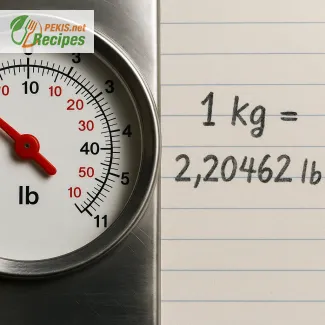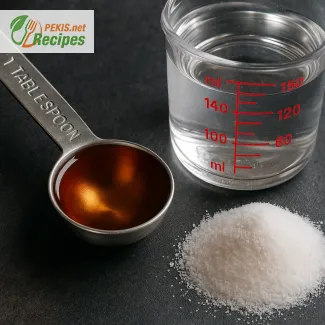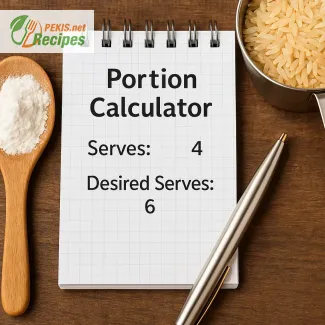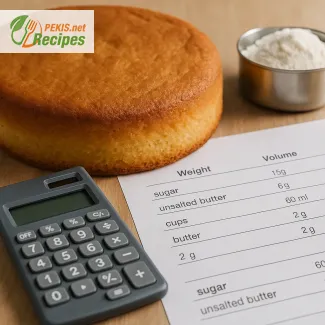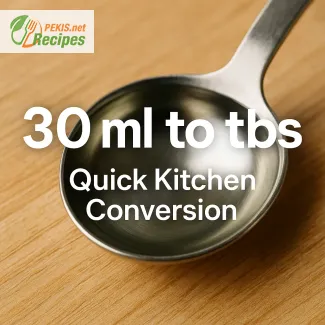
Understanding the 30 ml to tbsp conversion in everyday cooking
How to accurately convert 30 milliliters to tablespoons for your recipes
Converting 30 ml to tbsp is one of those small but essential kitchen tricks that every home cook, baker, or food lover eventually needs to master. Whether you're working with a recipe from Europe that lists ingredients in milliliters, or adapting a traditional dish that calls for tablespoons, understanding how to move between these two units can prevent a cooking disaster and ensure perfect results.
If you're looking to find out exactly how many tablespoons are in 30 milliliters, the simple answer is: 30 ml equals approximately 2 tablespoons. But there’s more to it than just a number. Measurement conversions in cooking depend not just on math, but on context — are you measuring liquids or solids? Are you using metric tablespoons or US tablespoons? The answers can subtly shift your outcome, especially in baking or sauces where precision matters.
Why does 30 ml matter so much in cooking?
In culinary terms, 30 milliliters might not seem like much — just a splash, a drizzle, or a spoonful. But depending on the ingredient, those 30 ml could make the difference between a creamy sauce and a runny mess. For example, 30 ml of olive oil adds richness to a salad dressing, while 30 ml of lemon juice brings just enough brightness to a marinade.
Many professional and home chefs rely on tablespoons because they’re easy to visualize and measure without a scale. But metric volumes like milliliters are more exact and more widely used globally, particularly in printed recipes from Europe or Australia. That’s why knowing how to convert 30 ml to tbsp is not just practical — it’s empowering in any kitchen.
Is a tablespoon always the same size?
No — and that’s where things get interesting.
A US tablespoon holds 14.79 ml, whereas a metric tablespoon (used in countries like the UK, Australia, or New Zealand) holds 15 ml. That means:
- 30 ml is equal to 2 US tablespoons (14.79 ml each)
- 30 ml is equal to 2 metric tablespoons (15 ml each)
For most everyday recipes, this difference is minor. But in baking, emulsions, or certain sauces where ratios must be precise, using the right version matters. If you're following a US-based recipe, stick with US tablespoons. If you're working from a European or Commonwealth source, assume a 15 ml metric tablespoon unless noted otherwise.
Common uses for 30 ml in the kitchen
When will you typically need to measure out 30 ml? Here are some of the most common situations:
- Dressings and vinaigrettes: 30 ml of vinegar or oil is often the base of a simple salad dressing.
- Baking ingredients: Many baking recipes call for 30 ml of milk, water, or melted butter to adjust dough or batter consistency.
- Sauces and marinades: You might add 30 ml of soy sauce, lemon juice, or wine to infuse flavor.
- Nutrition tracking: If you're logging calories or macros, knowing that 30 ml is roughly 2 tablespoons can help you calculate more accurately.
Even when a recipe doesn't specify milliliters, having this conversion in your mental toolkit means you can cook more confidently with recipes from all over the world.
Should you round 30 ml to 2 tbsp in every case?
Generally, yes — rounding 30 ml to 2 tablespoons is accurate enough for most dishes. But if you're dealing with sensitive ratios, especially in pharmaceuticals, infant food, or scientific recipes, avoid rounding and use a digital scale or proper measuring tools.
For example, if a precise herbal infusion recipe calls for exactly 30.0 ml of a tincture, don’t assume two tablespoons will be exact. Use a syringe, graduated cylinder, or proper metric measuring spoon to be accurate to the decimal.
In contrast, for homemade soup, salad dressing, or pancake batter, rounding is just fine — the human palate won’t notice the 0.42 ml difference between a metric and US tablespoon.
What to do if you don’t have measuring spoons?
You might be halfway through a recipe, and realize — you’ve got no tablespoons, no ml measuring cup, and no digital scale. So what now?
Here are a few clever kitchen hacks:
- Use a regular soup spoon: The average soup spoon holds around 10–15 ml, depending on its size. So two well-rounded soup spoons will get you close to 30 ml.
- Use a shot glass: In many places, a standard shot glass holds about 30 ml, making it a perfect one-to-one substitute.
- Use teaspoons: Since 1 tablespoon = 3 teaspoons, just measure out 6 teaspoons for 30 ml. This works well when you're using a teaspoon set but don’t have the tablespoon piece.
These solutions aren’t perfect, but they’ll save your recipe when you’re in a pinch.
Mastering small conversions leads to big success
Understanding how to convert 30 ml to tablespoons might seem like a tiny detail, but these small skills are what make you a more confident, flexible, and intuitive cook. Once you get the feel for how metric and imperial measurements compare, you’ll be able to flow between different cuisines, adapt international recipes with ease, and avoid the stress of halting your cooking just to look up conversions.
The key takeaway? 30 ml is approximately 2 tablespoons, whether you're using US or metric, and knowing that lets you keep cooking without skipping a beat.
